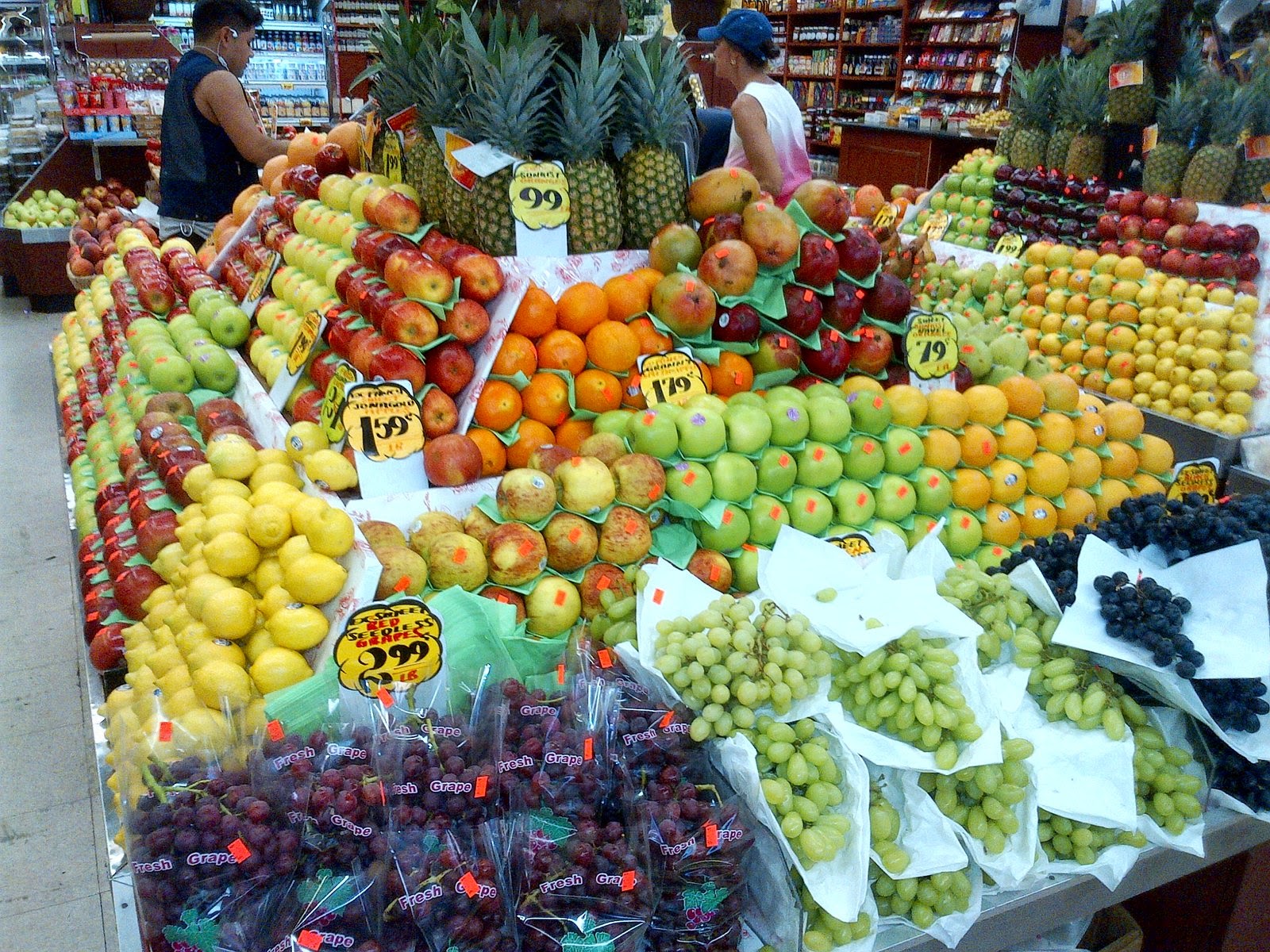Brighton Beach is a Brooklyn neighborhood adjacent to the more famous Coney Island. In addition to its lovely and gorgeous mosaic beach (yes, the same South Shore of Long Island beaches that celebrities enjoy in The Hamptons), Brighton offers what New York Magazine called "arguably the most fascinating ethnic enclave in New York," an area in which several waves of Russian immigrants, initially Russian Jews in the 1970s and more recently a mix of Russian Jews and gentiles after the collapse of the Soviet Union, call home.
These are some of New York's most produce-loving people, as a stroll down the neighborhood's main drag, Brighton Beach Avenue, will reveal.
Some fruit vendors, particularly Fancy Farm (across the street from the Brighton Beach branch of the Brooklyn Public Library) are as fancy and beautifully arranged as any gourmet store.
Don't be surprised to see a sea of options, especially for produce items particularly beloved in the Russian community - three kinds of sour cherries, for example.
Does the number 99 contain mystical properties? Nah, these demanding shoppers just enjoy a good value.
Of course, the long Russian winter gives an appreciation for the need to preserve that bounty. Or maybe it's just that pickles are so tasty! Expect your vendor to carry a selection - pickled cucumbers, cabbage, tomatoes, etc.
Every now and then you'll see a sign that shows an appreciation for other produce items that wouldn't necessarily get as much love in another community.
Of course, Brighton Beach is still a beach! Not everyone is focusing on the produce. (And to be honest, once I'm on the beach, neither am I.)
Amazingly, this journey is readily accessible via the same subway lines that might take you to Central Park or Rockefeller Center. Or, in my case, home.


























